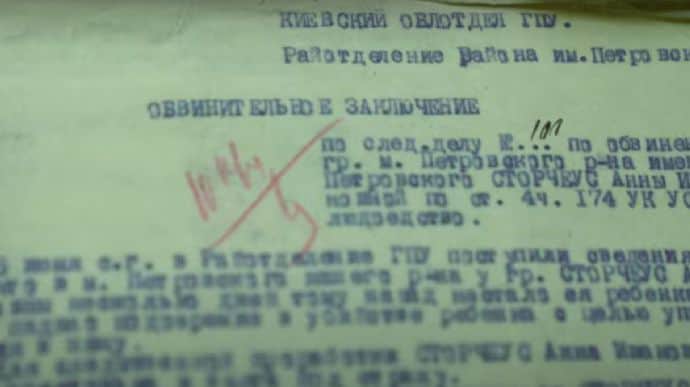Interior Ministry reveals unique documents that give insight into cannibalism during Holodomor famine

Ukraine’s Ministry of Internal Affairs has published some unique criminal case materials relating to cannibalism during the Holodomor of 1932-1933.
Source: Ministry of Internal Affairs of Ukraine
Details: The documents were published as part of the Real History project.
The state archive of the Ministry of Internal Affairs contains 1,022 criminal cases related to cannibalism in 1932-1933 that were opened by the Soviet police.
Quote from Inna Yashchuk, a state secretary of the Ministry of Internal Affairs: "I very much hope that the materials that have been discovered today will give impetus to serious historical legal and other scientific research. This is a rich seam for research by physiologists and psychiatrists: what drives a person to cannibalism.
I would really like our society to accept these facts by looking at them through this lens. People who resorted to cannibalism were victims of the Holodomor."
More details: One of the documents relates to the case of Anna Ivanivna Storcheus. Her husband and three children died of starvation. Anna killed and ate their fourth and last child, a girl named Nadiia.
A specific feature of all the cases is their politicisation and falsification, the Ministry of Internal Affairs notes. That is, they outwardly conformed to the law in that a formal investigation was conducted, the fact of the crime was established, and the culprits were identified. However, the victims – people driven to cannibalism by the Soviet regime – were convicted of murder.
The mechanisms of the man-made famine and the fact that people were driven to despair and insanity are not documented in the case files. Psychiatric examinations were rarely carried out. Instead, doctors wrote opinions like "Appears rather stupid, eyes shining." That, for example, was written in a case regarding the prosecution of a woman named Martselina Antonivna in May 1933.
The archives also contain many cases of corpses being eaten, such as the case of M.K. Yarova. Her case file states that after her young child died of starvation, she was found to have eaten the corpse instead of burying it.
"Cannibalism became a widespread phenomenon at the height of the Holodomor, but the famine as such is not mentioned in these case materials. Instead, the case files show what the obvious focus of the regime was – the people accused of cannibalism did not want to join collective farms, or had not accumulated enough workdays [on the collective farm]. Also, the victims of the regime were Ukrainians whose class and social origin were ‘unsuitable’," the Ministry of Internal Affairs notes.
The documents describe people in these terms: "has earned 30 workdays, a declassed, degenerate, defective element [of society]", or "a Ukrainian woman, non-aligned with any party, illiterate, a slacker".
Overall, out of over a thousand cases, there are only a few isolated cases of someone being referred for psychiatric treatment. The vast majority of these people were sent to camps run by the People's Commissariat for Internal Affairs (NKVD) to work on the construction of the White Sea-Baltic Canal.
Support UP or become our patron!





